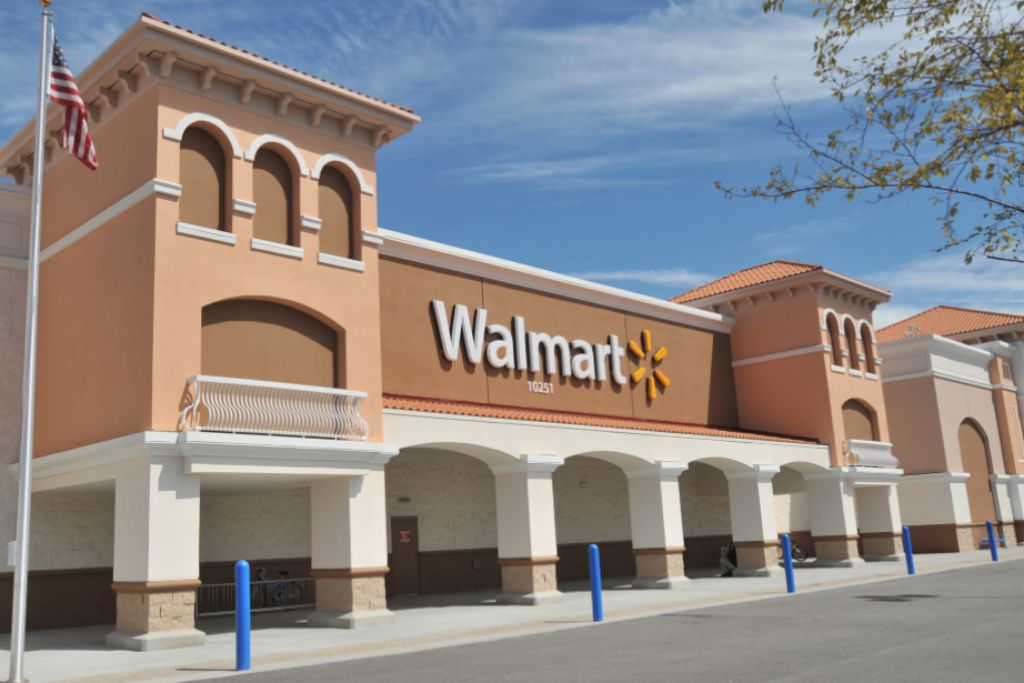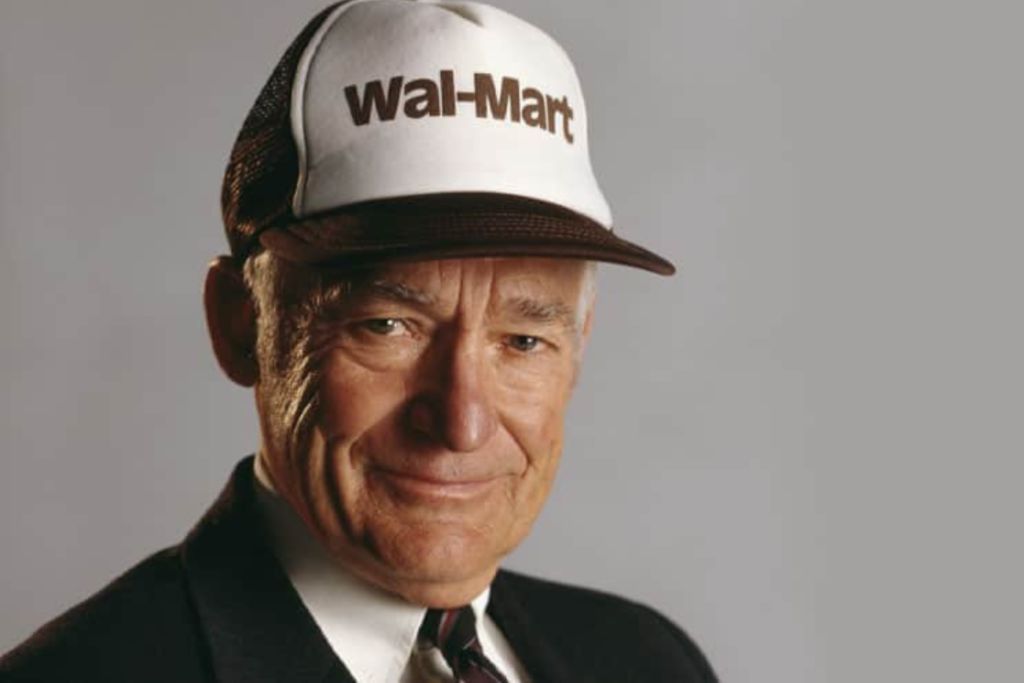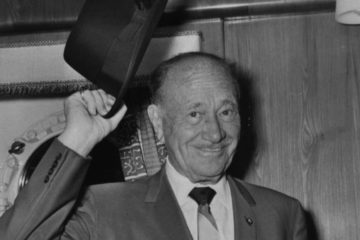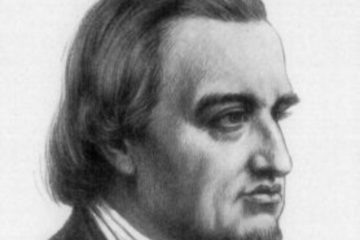
Today, the Walton family are best known for being the driving force behind Walmart. Owning a large portion of Walmart, the Walton family are among the richest families in the world. Despite this, the Walton family net worth is still clouded in mystery…
It’s not exactly a secret that they own Walmart, however, you’d be surprised to learn about the other things they own, including a bank, a solar energy company and even sports teams, that contribute just as much to their net worth as Walmart does!
Who Are The Walton Family?
But before we can truly look at what the Walton family net worth is today, we first need to know a bit more about the family itself (and exactly why they’re so famous!)
Enter Sam Walton
Today’s Walton family can trace their wealth back to Sam Walton and his younger brother, James “Bud” Walton.
Growing up in the Great Depression, as the children of farmers turned mortgage brokers, life was tough for the Walton boys. Becoming adults in the early 1940’s, both Sam and Bud would serve in the military during WWII.
Leaving the military after the war, Sam would buy a Ben Franklin variety store (a type of five-and-dime store that were common in the 1940’s and 1950’s) in Newport, Arkansas, which would soon prove to be quite successful.
Seeing Sam’s success, the landlord who owned Sam’s premises tried to pressure Sam into making a sale by refusing to renew the lease. Against his best wishes, Sam effectively sold the store to the landlord for $50,000 by selling the store’s inventory and fittings to him.
A year prior to this, Sam, his wife Helen, and his father-in-law, acquired another store in Bentonville, Arkansas. Much like the store in Newport, the Bentonville store would do quite well, doubling its revenue in less than two years.
Although he lost the Newport store, Sam Walton would begin to establish a chain of Ben Franklin five-and-dime stores across Arkansas, Missouri and Oklahoma, with Sam’s stores all being
Realizing that he couldn’t expand his stores alone, Sam would bring in his brother Bud to help. Initially only the company pilot – flying a second-hand aircraft Sam had bought to scout locations with – the brothers would soon enter business together.
By 1962, the brothers had 16 stores (15 Ben Franklin franchises and one independent store in Fayetteville, Arkansas) located in Arkansas, Oklahoma and Missouri.
Founding a Supermarket Empire
During the late 1950’s and early 1960’s, the 15 stores the Walton brothers owned were the 15 most profitable Ben Franklin locations, owing to the small alterations Sam and Bud had made to their stores.
Hoping to see these alterations become standard policy for Ben Franklin, the Walton brothers lobbied the Ben Franklin management to rewrite their rules, only to be rebuffed by the management for “not knowing what they were talking about”.
Understandably upset, Sam Walton chose to open another location in 1962, this time in Rogers, Arkansas, which he called Wal-Mart Discount City, implementing all of their profit-increasing policies, without having to pay a costly franchising fee.
Learning from what he’d learned operating Ben Franklin stores, Sam realized that if his stores were closer to people’s homes than its competitors were, whilst also having everything you’d need, people would shop at his stores instead of a competitor like Kroger.
To make his stores even more appealing, Wal-Mart Discount City would only stock American-made products, whilst also selling them at a cheaper rate than established retail chains like Kroger were.
Perhaps not surprisingly, Wal-Mart Discount City soon proved to be even more success than Walton’s Ben Franklin franchises…
Building on this success, Walton would establish new locations all across Arkansas. However, these new locations would be rebranded as simply “Wal-Mart” rather than the original “Wal-Mart Discount City” for marketing reasons.
Continued Expansion
One of the driving forces behind Wal-Mart’s early expansion was its low pricing.
To save money, Sam would only open new stores that were within a days’ driving distance from his main warehouse. Seeing the huge costs of hiring a trucking company to haul fresh supplies to all of his stores, Sam would start his own.
These two facts would save Wal-Mart millions of dollars per year, even as it added new stores every month. These were savings that Wal-Mart could pass on to its customers, which helped to make the chain even more popular than before!
Within a few years of starting Wal-Mart, the store would look to expand beyond a single warehouse…
Expanding further into Arkansas, as well as Missouri and Oklahoma, Wal-Mart would continue using the Wal-Mart trucking service, whilst also building warehouses at specific intervals, which allowed some of them to serve up to 25 stores!
Although Wal-Mart expanded greatly during the late 1960’s, Wal-Mart would expand even more so during the 1970’s and 1980’s.
Going from less than 50 stores in the late 1960’s, Wal-Mart would have 190 stores in 1977, before expanding to have well over 800 stores in 1985, all of which were owned by Walmart, Inc. (and thus the Walton family).
Seeing the risk that stores like BJ’s Wholesale Club and Costco posed to Walmart’s low-cost setup, Sam Walton would start the Sam’s Club chain of discount stores, which were centrally owned by Walmart, but operated as a separate division.
Enter The Second Generation

Having married Helen Robson, the daughter of a well-to-do Oklahoman banker, on Valentine’s Day 1942, the couple would go on to have four children together – Rob (born 1944), John (born 1946), Jim (born 1948) and Alice (born 1949).
Sam’s brother, Bud, would meet and later marry his wife, Audrey, whilst undergoing pilot training during WWII. The couple would have two daughters together, Ann Walton Kroenke (born 1949) and Nancy Walton Laurie (born 1952).
Growing up as their fathers were expanding their Ben Franklin chain, and later Walmart, the six Walton children were taught by their parents that if you wanted to succeed in life, you need to innovate.
Wanting the next generation of the Walton family to learn the value of money before they joined the family business, Sam and Bud would encourage their children to get regular jobs like everybody else.
Upon graduating university, all six Walton children would get jobs, with some joining the finance industry, whilst others became involved in real estate, with one even joining the military and serving in Vietnam!
Although having served in some capacity in the company for many years, the death of Sam Walton in April 1992, would see Sam’s three sons get involved in the family business, running certain aspects of the family business or just serving on the board.
Under their watch, Walmart expanded greatly, going from a major American supermarket chain to an internationally recognized one, with a presence in 15 other countries, including the UK, Canada, Brazil, Argentina, India, South Africa and Japan!
Enter The Third Generation
Having been born in the 1940’s and 1950’s, the original six Walton children have already surpassed retirement age. Whilst they’ve all indicated that they don’t plan to retire, they are wary about the future…
In 2005, Sam Walton’s middle son, John, died in a plane crash. Splitting his fortune between his wife, a few charities and his son, Lukas, the latter has literally billions of dollars worth of shares in his family’s company.
Although he hasn’t officially taken a position at Walmart or one of the other companies the Walton family owns yet, he has been particularly involved in the family’s charity – the Walton Family Foundation.
Despite his reluctance to enter the family business, his cousin, Steuart (the eldest son of Jim Walton), has been heavily involved in the family business for years, having replaced his father on the Walmart board in 2016.
Before this, he had worked for several of his own companies (including a composite aircraft manufacturer and a private equity firm). He had also briefly worked for Walmart at their London offices, where he worked in their mergers and acquisitions department.
According to inside sources, Steuart has been instrumental in much of the growth that Walmart has seen over the last few years, in particular through his push to add more Walmart stores along the west coast, as well as adding more stores internationally too!
In keeping with the principles passed down from Sam Walton, Steuart’s younger brother, Tom, has invested heavily in Bentonville, building retail complexes, mountain bike tracks and other things that attract millennials.
Thanks in large part to this, the population of Bentonville has grown 30% in the last few years, with house prices nearly doubling!
Philanthropy
During Sam Walton’s later life, he and his wife, Helen, wanted to use their immense wealth for good, and teach their children, now adults, the importance of giving back.
To that end, Sam and Helen Walton would become seriously involved with several charitable organizations, leading them to found the Walton Family Foundation, the Walton family’s primary charitable organization, in 1987.
Primarily focusing on education, in particular charter schools, the WFF has given millions of dollars in grants to build more charter schools, as well as expand the operations of current charter schools.
In October 1998, the WFF would donate $50 million to the University of Arkansas to build a business college. In recognition of this huge donation, the new business college would be called the Sam M. Walton College of Business, a name it still uses today!
As time has progressed, the Waltons have also become involved in protecting the environment, using the WFF to fund the development of green spaces throughout Arkansas (and the rest of the US) and develop sustainable fisheries.
Having lived in Arkansas for most of her life, Alice Walton and the rest of the Walton family by extension, have sought to develop the infrastructure in Arkansas, helping to fund the construction of new roads, bridges and even airports!
Indeed, as a percentage of their total net worth, the Walton family are one of the most charitable families in the world, consistently being ranked near the top of the Forbes 25 Billionaire Philanthropist list, donating an average of 1.3% of the net worth annually.
Although nothing to do with philanthropy, the Waltons are also famous for their political contributions, often donating to candidates on both sides of the aisle, based on the policies and views that particular candidate has, rather than their party affiliation.
Walton Family Net Worth Today
Based on our calculations, we estimate the Walton family net worth at around $250 billion.
Looking on the Forbes 400 today, you’ll find that the name “Walton” appears several times. Presently, three Waltons (Alice, Jim and Rob – Sam Walton’s three remaining children) are in the top 20, at #16, #18 and #19 respectively.
Scrolling further down, you’ll also find that at #118 is Lukas Walton, a grandson of Walmart founder Sam Walton. At #278 Ann Walton Kroenke, the richest member of the Walton family not descended from Sam Walton (but rather his brother, Bud Walton).
Going even further, you’d also find that Nancy Walton Laurie (Ann’s younger sister) and Christy Walton (the widow of Sam’s fourth child, John, who died in a plane crash in June 2005) both hover in the mid-#300s.
With seven members of the family on the Forbes 400 its safe to assume that the Waltons won’t be going broke anytime soon…
However, the Waltons have seemingly taken a page out of the Rothschild’s book, continuing to maintain a relatively low profile, even as their combined net worth increases exponentially, with them even going as far to hide their net worth like the Rothschilds do!
Where Does This Wealth Come From?
No we’ve established the Walton family net worth to be roughly $250 billion, we should probably look at where the bulk of their wealth comes from…
Walmart
Perhaps not surprisingly (being descended from both the founders of the company) most members of the Walton family alive today hold a stake in the supermarket giant, Walmart.
The amount of the company that each member of the family owns varies greatly, mostly depending on age and which member of the family you’re descended from.
You see, the descendants of Sam Walton have a larger holding than the descendants of Bud Walton. The children of Sam and Bud also tend to have larger holdings than the grandchildren do (as they have been split equally between the children for tax purposes).
Today, Rob Walton (Sam’s oldest son) has the largest stake in Walmart at 0.09%, followed by his sister, Alice Walton, and their little brother Jim. Various widows, grandchildren, cousins, nieces and nephews also own minor stakes in the company too.
Whilst combined Sam’s three children own less than 0.1% of Walmart, the family also indirectly owns large portions of shares through Walton Enterprises and Walton Family Holdings Trust.
Combined, the Walton descendants and their associated companies own a little under 50% of the company their family founded. As of the time of writing, this stake is worth a little over $200 billion (Walmart’s present market capitalization sits at $401 billion).
Arvest Bank
Founded in 1961 as The Bank of Bentonville, a small community bank in Bentonville, Arkansas, the bank would soon expand to the neighboring city of Pea Ridge on the Arkansas-Oklahoma border, soon growing to have $3.5 million in deposits alone.
Catching the attention of Walmart founder Sam Walton in the late 1960’s, the Walmart co-founder would acquire the bank for $300,000, with him using the bank to partially fund Walmart’s early expansion throughout the southern United States.
Although operated as two separate companies, Sam would expand The Bank of Bentonville (renamed Arvest Bank after the Walton takeover) alongside Walmart, often acquiring distressed banks in Arkansan cities that Walmart had stores in.
In 1987, Arvest would expand outside of Arkansas for the first time, acquiring a 50% stake in the National Security Bank of Norman in Oklahoma, before acquiring both the State Federal Savings and Village South National Bank in Tulsa, Oklahoma.
Placed under the leadership of Jim Walton in 1990, Jim has continued to aggressively expand Arvest. Today, the bank has well over 260 banks in Missouri, Oklahoma and Arkansas, with assets worth a total of $20 billion!
Thanks to their stake in Arvest Bank, the Walton family were able to purchase Community Publishers, Inc. (CPI) who own and operate several local newspapers in Missouri, Oklahoma and Arkansas.
True North Venture Partners
In 1996, John Walton and his close friend, Michael J. Ahearn, established an equity investment/venture capital company called True North Partners, eventually changing the company’s name to JWMA Partners for legal reasons.
Within a few years of operations, JWMA Partners would become one of the fastest growing equity investment/venture capital firms in the country.
Following John’s death in 2005, his shares would pass to his wife and son, but the firm would soon cease trading as a result of one of its two main shareholders dying.
In 2011, Michael J. Ahearn would start a successor company to JWMA Partners called True North Venture Partners, who had a focus on companies in their early stage of growth, especially those in the energy, water, agriculture and waste management industries.
Although founded completely independently from Walton control, John Walton’s son, Lukas Walton, would join the company, soon being promoted to one of Ahearn’s right-hand men, where he’d also gain a stake in the company.
Sadly, as this company is private, and tries its bets to stay under the radar, it’s difficult to get an accurate measure of the value of True North Venture Partners, and thus the value of the Walton family’s stake in the company.
First Solar

In 1999, JWMA would acquire a solar panel manufacturing company called First Solar, Inc.
At the time of the deal, First Solar was a relatively small operation, producing a limited amount of solar panels per year.
Investing millions of dollars in the company, First Solar would expand its operations enormously, becoming the world’s largest producer of solar cells within a decade of JWMA investing in the company.
However, after John Walton’s death and the subsequent dissolution of JWMA, his son, Lukas, would inherit a 21.5% stake in First Solar, which he still has (as of the time of writing anyway!)
As a publicly traded company since November 2006, currently trading at roughly $76 per share (with a market capitalization of $8.1 billion) means that Lukas’s stake in First Solar is worth a little less than $1.75 billion.
Much like his relationship with Walmart, Lukas prefers to remain (mostly) in the shadows, instead leaving it to the professionals to run First Solar, whilst he can focus on giving back to the community.
Thanks to this, First Solar has expanded greatly since 2005, first becoming the largest solar cell manufacturer in the world, before expanding to become a solar panel installer, which has tripled profits and boosted the company’s share price considerably!
Kroenke Group
Whilst on a ski trip to Aspen, Colorado in the early 1970’s, Stan Kroenke, would meet Ann Walton, the daughter of Walmart co-founder Bud Walton. Falling in love the pair would begin to date over the course of the early 1970’s.
Married in a private ceremony in 1974, Stan would start his a real estate development company, Kroenke Group, in 1983. Using his connections with his Walton in-laws, Kroenke Group would develop plazas near new Walmart stores.
Eventually diversifying into the world of sports and media, through the Kroenke Sports & Entertainment subsidiary of Kroenke Group, Stan and Ann would soon come to own a series of basketball, lacrosse, soccer, football and e-sports teams.
Having never taken his company public, Kroenke is still the majority shareholder of Kroenke Group. Minor shareholders of his company include his wife, Ann Walton Kroenke and their son, Josh Kroenke.
Designated as both of his parents’ heir, Josh Kroenke (a member of the Walton family on his mother’s side) stands to inherit sizeable stake in both Walmart (through his mother) and Kroenke Group (through his father).
As a result of the long-standing business dealings between Kroenke Group and Walmart, several other members of the family also hold stakes in Kroenke Group too, albeit minor ones.
Real Estate
For the richest family in the United States, it’s no surprise that the Walton family have an impressive amount of money, some claim as much as $500 million, tied up in real estate.
Despite half a billion being a lot of money in terms of real estate, the Walton family actually maintain relatively modest homes (considering the scope of their net worth anyway!) with them simply having many homes divided among many members.
Rob Walton currently owns a 26,000 square foot mansion in Paradise Valley, Arizona, with two secondary homes adjacent from the mansion, with the three properties worth an estimated $20 million.
Jim is the least extravagant of his siblings, owning a large, yet secluded mansion just outside of Bentonville, that’s covered in trees to keep the prying public (and the occasional protester) at bay.
Alice Walton is by far the most lavish of the three remaining Walton siblings, having at one point owned a 250 acre ranch in Millsap, Texas, another 4,416 acre ranch also in Texas, as well as a two-story condo on Fifth Avenue with a view of Central Park.
Together, these properties were valued at over $100 million.
Whilst still quite modest given their immense wealth, the third generation of the Walton family is decidedly more lavish with their real estate…
In 2018, Steuart Walton reportedly splashed out $14 million for a Malibu mansion, whilst his cousin, Paige Laurie (one of Bud Walton’s granddaughters), paid $40 million for a Beverly Hills mansion a few months later!
Art & Car Collections
As with many other insanely wealthy groups of people, the Walton family have gotten into collecting things of value. Today, the direct descendants of Sam Walton have sizeable art and car collections, worth almost a billion dollars combined!
Starting in his early adulthood, Sam Walton’s oldest son, Rob Walton, would begin collecting vintage cars. Using his immense wealth, Rob soon had a rather large car collection, worth several million dollars.
Thanks to his great wealth, Rob would be able to purchase several extremely rare (and thus valuable) vintage cars, most notably one of only five Shelby Daytona Coupes ever built, with his being valued at $15 million in 2012…
When he crashed it in August that year. Not surprisingly, Rob soon had it restored with him still owning it as of the time of writing!
Beyond Rob’s vintage car collection, his sister, Alice Walton, would also start her own collection, this time being an art collection rather than a car one.
Having bought her first painting (a replica of Picasso’s Blue Nude for $2) at the age of 10, as soon as Alice became an adult, she’d begin to buy millions of dollars worth of art, with her art collection being valued at $500 million at last appraisal.
Indeed, her collection includes original pieces from famed American artists like Georgia O’Keeffe, Tom Wesselmann and Andy Warhol. To store her art, Alice had the Crystal Bridges Museum of Art built in Bentonville, Arkansas – the town that had the first Walmart.
What do you think of the Walton family net worth? Tell me in the comments!
Featured image courtesy of Walmart.


